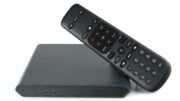I’ll admit I’m a little late to the Dolby Vision party. It’s been around for maybe six years. I’ve seen demonstrations, but it took me a little while to get a TV of my own with the technology integrated. The demonstrations always look stupendous. The reality, though, has left me a little cold. I’ll explain.
Explaining Dolby Vision, just a little
Dolby Vision is a way for reality to apply to the computer data used for video. See, in theory it’s possible for there to be this massive amount of color, brightness, saturation, and all the other qualities that make an image exactly what it is. Just in terms of brightness, there’s a range that goes from “looking at the surface of the sun” to “being locked in a room with no light, 100 feet underground. But realistically, a TV can’t show that total difference in brightness. Good thing, too, because you’d risk blinding yourself every time you watched Succession.
There’s a word for the actual capabilities of something, whether it’s a printed page, a monitor, or something else. We call it gamut. That’s the sum total of all the colors that something can show you, usually displayed as a subset of all possible colors. This usually gives you a chart like this:

This chart tends to mean a lot to experts but not so much to regular folks. But everyone likes it because it’s pretty.
What Dolby Vision does
When a TV show or movie is created, the people who create it know what they want it to look like. But they also know they can’t control the settings on your TV. What Dolby Vision does is help them do that, sort of. If you’re in Dolby Vision mode, the number of user settings is generally limited and the manufacturer puts in settings that represent the closest possible calibration. Then, Dolby Vision takes over to try to figure out what happens to colors that your TV can’t show. A bunch of math later and you get an image that’s as close to the creator’s intention as possible.
Without Dolby Vision, you get a classic problem. Think back to when Game of Thrones aired one of its last episodes, “The Long Night.” You may remember that one as either (a) the one that was too dark, or (b) the one where [SPOILER] kills the [SPOILER] at the end. A lot of people complained that the episode was so dark it couldn’t be seen. The problem was first of all that it was produced in 4K HDR and aired in HD, meaning that a lot of the possible colors couldn’t be shown. The other problem was that people can’t generally be counted on to calibrate their own TVs to match a reference level. (For what it was worth, I thought the episode was dark, but had no problem seeing stuff.)
As HBO Max now has all of Game of Thrones in 4K HDR, you can try it again on a Dolby Vision equipped TV to see if it looks better to you. I haven’t gotten around to it yet myself.
My problem with Dolby Vision
My problem with Dolby Vision is that the issue of seeing “the proper color” has three sides to it, and Dolby Vision only fixes one of them. Which I suppose is better than not fixing any of them, but is it? If you have four flat tires and you change one of them, you’re still not going anywhere.
Let me explain. In order to really have “proper” calibrated color, you need three things.
1. A properly calibrated display
Obviously this is the part Dolby Vision does. It makes sure that the TV is showing colors that are as true to intention as possible. This is actually a big step because most people never take their TV off “demo” mode. That’s the mode they use in stores. See, stores are brightly lit so the TVs push all the colors really hard to compensate. That’s probably not what you want in your dimly lit living room. Dolby Vision does help with that.
2. A proper display environment
Here’s a big part of where it falls apart. You know that things look different in bright lighting as opposed to dim lighting. However, Dolby Vision doesn’t seem to take that into account. Maybe some of the more expensive TVs have sensors to determine room lighting. Mine doesn’t. So the result is, in the fairly bright light in which I watch TV, Dolby Vision looks dull and flat. If I watch in a mostly darkened room, it looks great. But in general I don’t do that.
Yes I get that the creators of the content want me to watch in a fairly dark room, but I don’t want to. I don’t like tripping over things and I often use my phone while I’m watching. Sometimes I even snack. These things work better when there’s a bit more light.
3. A neutral observer
This third part is just as important as anything else. Every person sees color somewhat differently. Science tells us that we generally agree that “red” is “red” and “blue” is “blue” but beyond that, there’s a lot that goes on. Most men over 40 have at least some degree of color blindness. All of us lose the ability to see very dark things as we get older, and as we pass through middle age, everything gets duller and yellower in our perception.
So, in order to really see things just as the content creator intended, you would have to be fairly young and more likely biologically female. I’m neither of those things. Maybe Dolby Vision looks better to other folks than it does to me, but that’s sort of the point. If I’m not capable of observing the creator’s intent due to my biology, then calibrating the monitor and the room lighting is largely useless.
Ideally…
If you were really going to provide the experience the creator intended, you’d need a closed system where the room lighting was controlled, the TV accounted for the room lighting, and the whole thing was then calibrated again to deal with the inherent issues of whomever is watching the thing. But most of that doesn’t happen. It’s not likely to, either.
And of course none of that takes into account personal choice. As a general rule, people who live in sunnier climates tend to like their TVs a bit brighter and more saturated. That matches their experience in life. People who live in the frigid North tend to prefer more muted colors. This is ultimately important because…
IT’S YOUR TV AND YOU SHOULD HAVE IT YOUR WAY.
I’ve said this before in several other scenarios. It’s ok to respect the intention of the creator, the editor, the colorist, and all the other folks who labor to create great entertainment. But in the end, none of those folks bought you a house or even bought your TV. They certainly didn’t do something like get you LASIK or cataract surgery so you could see better color.
If you like everyone on TV to look sunburned, go for it. If you like everything to look almost black and white, that’s up to you. I respect the hard work put in by content creators, and all I ask is that they equally respect both my personal preferences and my biological capability. Does that seem so hard?
Personally, I have gotten to the point where I keep Dolby Vision OFF unless I’m specifically focusing on watching a movie in a darkened room. I’ve spent a lot of time calibrating my TV to match my eyes, my taste, and my viewing conditions, and frankly the TV just looks better that way. At least to me, but who else matters in this scenario?





